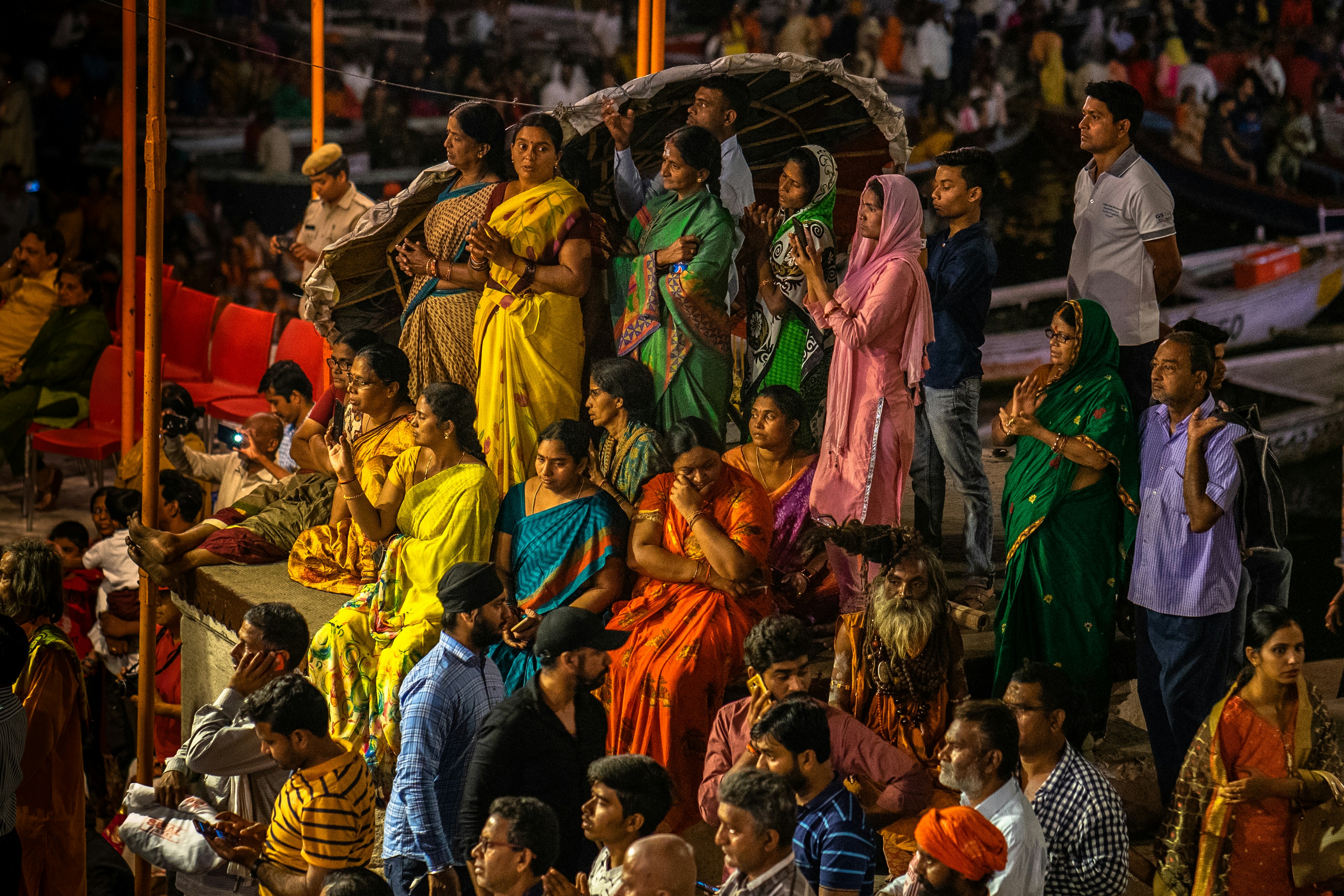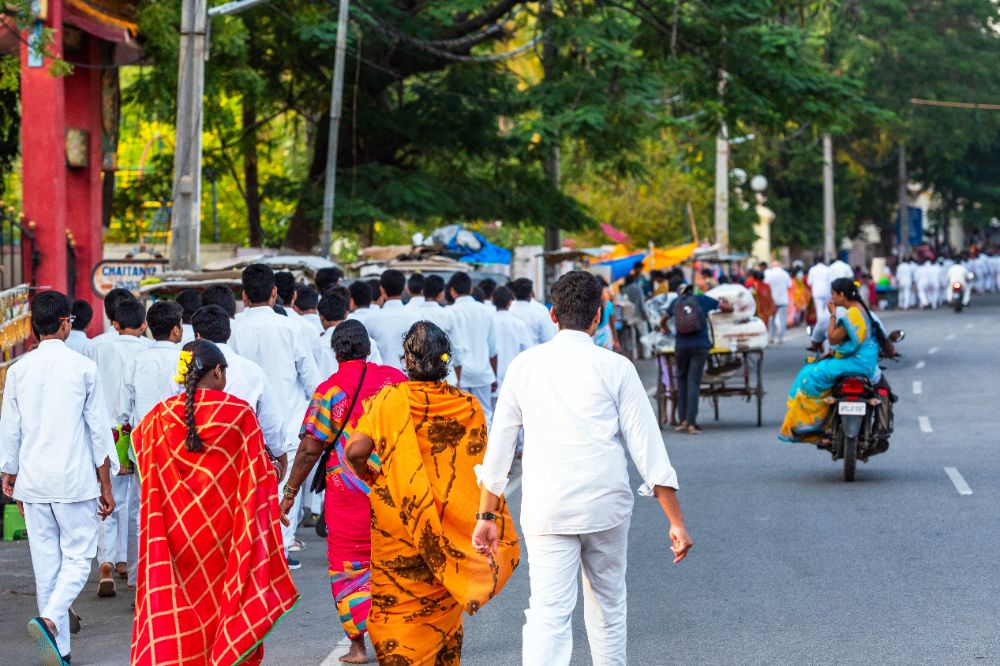
Prof. (Dr.) Ashish Verma, Professor, IISc Bangalore & Janet Southern McCormick, Senior Programme Manager at Challenge Works
A crowd forms when people gather at a specific place, occasionally sharing a common goal but sometimes coming together without a unified purpose. Despite often having detailed and well-thought-out arrangements, crowd disasters frequently happen in mass gatherings, where interactions within the crowd as well as local disturbances in the wider landscape can lead to disasters.
Crowd crushes, stampedes, panic rushes, etc. are becoming increasingly common. In the last decade alone, nearly 49 major incidents have led to more than 4,000 casualties and a similar number of injuries, globally *. In India, the use of data for crowd management remains limited. In the current scenario, crowd managers mostly make decisions based primarily on manual observation and prior experience, which are mostly subjective leading to inefficient crowd management.
So, how can we better understand crowds to predict and manage the risk of disasters?
Pedestrian behaviour in a crowd is driven by a complex set of choices: where to go, which route to choose, which activity to perform, how to sequence the activities, whether to stop/move, which direction to choose, and many more. Ongoing interactions with other pedestrians and the surrounding environment make this even more complicated.
By considering the psychology of people, particularly in emotionally charged gatherings like religious events, political rallies, and concerts, we can better understand the factors that can influence behaviour, how people may react when in a crowd and, therefore, how to predict and prevent crowding disasters. Overcrowding incidents in recent years illustrate the importance of integrating social psychology into crowd dynamics modelling. In Varanasi, northern India, in 2016 a crush and later a stampede on the Rajghat Bridge resulted in the loss of 24 people due to rumours that the bridge had collapsed. There were more than thirty-three times the number of expected pilgrims who gathered, creating instability in the crowds. This demonstrates the significant challenge of anticipating, planning, and managing crowds effectively. Models and technologies to monitor and capture complex behaviour can be used to help event planners in creating and implementing effective crowd management strategies.
But, can crowd models and technologies capture realistic behaviour? Can they determine whether crowds are safe? Can they help us understand why people gather in large numbers despite safety concerns and whether (or why) people behave differently in a crowd? And, how can individual perceptions, motivations, and experiences affect collective behaviour?
Researchers and technology developers have developed myriad models to understand and simulate crowd dynamics, using different sensors from natural environments, controlled laboratory experiments, and virtual experiments. The question is whether these models can accurately simulate the way humans perceive their environments, make mobility choices, and follow through on those choices, taking into consideration other factors such as the presence of family/friends, individual motivations and experiences, and many others.
Existing pedestrian sensing and simulation models are majorly developed outside India, but they do not take into consideration the varied pedestrian characteristics, behaviour, and constraints observed in mass gatherings within India. One of the key reasons for this is a lack of local datasets, therefore, tailoring these models to the Indian context is essential to help develop accurate solutions for crowd safety.

The city of Varanasi in northern India is an interesting case in point. Being the spiritual centre of the country it hosts regular and special religious rituals and festivals for huge numbers of pilgrims. As such, millions of tourists visit the city every year - in 2022 Varanasi welcomed more than 70 million tourists, which is 35 times its residential population - and these numbers are expected to increase annually. What is more, the city’s ancient infrastructure means that major physical design changes cannot be made. This combination of factors makes Varanasi a particularly complex case and emphasizes the need for a more comprehensive crowd management plan that must use a combination of technology, urban design, behavioural nudges, and disaster management capacity.
Innovations in data collection methods and technologies can help; from pedestrian sensing and tracking to modelling and simulation, from big data analytics and IoT, technology offers many possibilities, especially as crowd events in the twenty-first century have become big data events. Combining the use of technology with other disciplines can create multidisciplinary approaches resulting in collaborative research and insights that can be applied to crowd management in practical ways.
Increasing the safety and accessibility of crowds is a complex ask. There are issues in modelling and data collection techniques to extract crowd information, such as crowd counting, tracking, activity recognition, and others. There are also different interconnected levels of decision-making needed to develop realistic models and technologies that can mimic people's natural behaviour. And, ultimately, all of this information needs to be translated into effective crowd management strategies and plans. So, the Toyota Mobility Foundation’s Sustainable Cities Challenge is timely and long overdue. The challenge aims to help cities move more safely, inclusively, and sustainably, and one of the three host cities partnering on this is Varanasi.
The Sustainable Cities Challenge Varanasi supports innovation in a space that is eager for new thinking and creativity. It offers innovators the chance to explore, develop, test, and scale practical solutions to help improve the efficacy of crowd management, and consequently increase the safety and accessibility of people in Varanasi, with the potential of scaling successful solutions across India and beyond.
*Choubey N (2024), "SENSING, ANALYSING AND SIMULATING HETEROGENEOUS UNSTRUCTURED CROWDS IN MASS RELIGIOUS GATHERING", Un-published PhD thesis, IISc Bangalore, India.